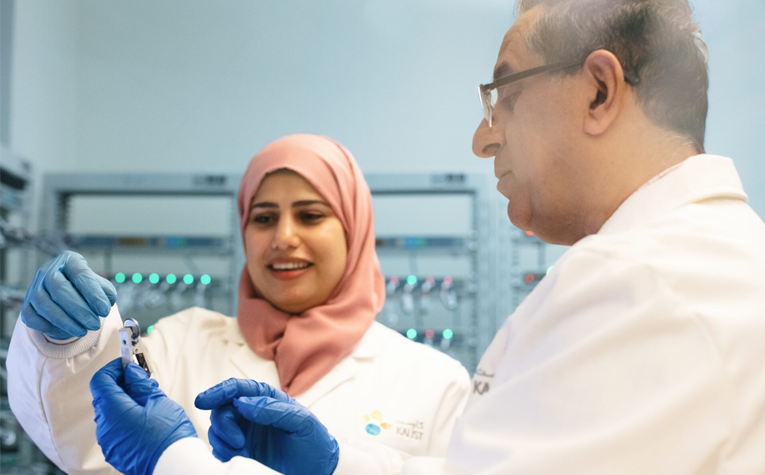
23 July, 2023
Zahra Bayhan is developing batteries that incorporate MXenes, which could provide a substitute for graphite in some batteries thanks to its excellent conductivity. © 2023 KAUST; Anastasia Serin.
As the world transitions to renewable power sources such as solar and wind, there is a growing need for high-performance rechargeable batteries to store the energy generated by this intermittent energy source. Today’s lithium-ion batteries are good, but their performance still needs to be improved; Developing new electrode materials is one way to improve their performance.
KAUST researchers have demonstrated the use of laser pulses to modify the structure of a promising alternative electrode material known as MXene, boosting its energy capacity and other key properties. The researchers hope that this strategy could help to engineer an improved anode material in next-generation batteries.
Graphite contains flat layers of carbon atoms, and during battery charging, lithium atoms are stored between these layers in a process called intercalation. MXenes also contain layers that can accommodate lithium, but these layers are made of transition metals such as titanium or molybdenum bonded to carbon or nitrogen atoms, which make the material highly conducting. The surfaces of the layers also feature additional atoms such as oxygen or fluorine. MXenes based on molybdenum carbide have particularly good lithium storage capacity, but their performance soon degrades after repeated charge and discharge cycles.
The team, led by Husam N. Alshareef and Ph.D. student Zahra Bayhan, discovered that this degradation is caused by a chemical change that forms molybdenum oxide within the MXene’s structure.

Zahra Bayhan and Professor Husam Alshareef think that laser scribing could be applied as a general strategy to improve the properties of other MXenes. © 2023 KAUST; Anastasia Serin.
To tackle this problem, the researchers used infrared laser pulses to create small “nanodots“ of molybdenum carbide within the MXene, a process called laser scribing. These nanodots, roughly 10 nanometers wide, were connected to the MXene’s layers by carbon materials.
This offers several benefits. Firstly, the nanodots provide additional storage capacity for lithium and speed up the charging and discharging process. The laser treatment also reduces the material’s oxygen content, helping to prevent the formation of problematic molybdenum oxide. Finally, strong connections between the nanodots and the layers improve the MXene’s conductivity and stabilize its structure during charging and discharging. “This provides a cost-effective and fast way to tune battery performance,” says Bayhan.
Read more at KAUST Discovery.